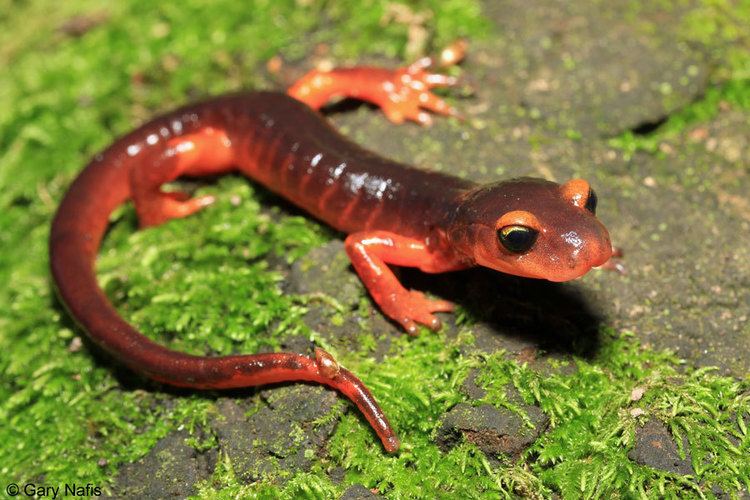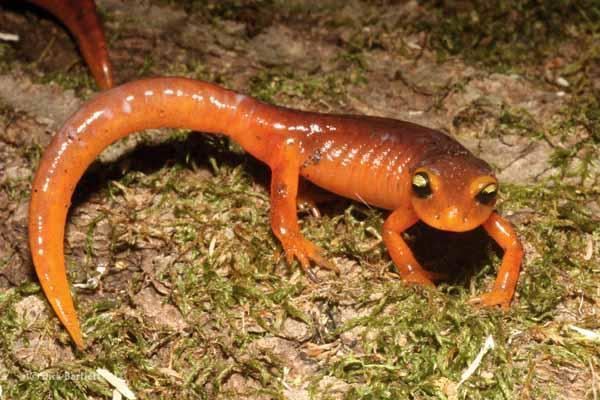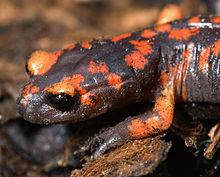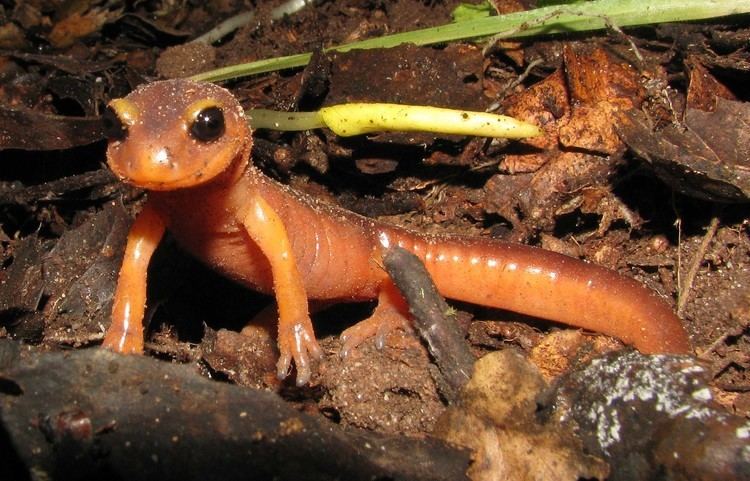Order Caudata Genus EnsatinaGray, 1850 Higher classification Ensatina | Phylum Chordata Family Plethodontidae Scientific name Ensatina eschscholtzii Rank Species | |
 | ||
Similar Slender salamander, Climbing salamander, Arboreal salamander, Lungless salamander, California slender salamander | ||
Oregon ensatina ensatina eschscholtzii ssp oregonensis salamander in surrey bc
Ensatina eschscholtzii (commonly known by its genus name, Ensatina) is a complex of plethodontid (lungless) salamanders found in coniferous forests, oak woodland and chaparral from British Columbia, through Washington, Oregon, across California (where all seven subspecies variations are located), all the way down to Baja California in Mexico. The genus Ensatina originated approximately 21.5 million years ago.
Contents
- Oregon ensatina ensatina eschscholtzii ssp oregonensis salamander in surrey bc
- Ensatina courtship
- Habitat and description
- As a ring species
- Human contact
- Subspecies
- References

Ensatina courtship
Habitat and description

The Ensatina subspecies E. e. eschscholtzii, or Monterey ensatina, can be found in Santa Cruz, Monterey, and the California coastal mountains. They reach a total length of three to five inches, and can be identified primarily by the structure of the tail, and how it is narrower at the base. This salamander is the only type that has this tail structure and five toes on the back feet.

Males often have longer tails than the females, and many of the salamanders have lighter colored limbs in comparison to the rest of the body. The salamanders lay their eggs underground, often in threes, which then hatch directly into salamanders, skipping the usual aquatic phase.
As a ring species

Ensatina eschscholtzii has been described as a ring species in the mountains surrounding the Californian Central Valley. The complex forms a horseshoe shape around the mountains, and though interbreeding can happen between each of the 19 populations around the horseshoe, the Ensatina eschscholtzii subspecies on the western end of the horseshoe cannot interbreed with the Ensatina klauberi on the eastern end. As such, it is thought to be an example of incipient speciation, and provides an illustration of "nearly all stages in a speciation process" (Dobzhansky,1958). Richard Highton argued that Ensatina is a case of multiple species and not a continuum of one species (meaning, by traditional definitions, it is not a ring species)
Human contact

The ensatina can usually be found under logs or brush, by or in streams and lakes, and in other moist places. They are easily distressed by improper handling, because they rely on cutaneous respiration, their thin skin is very sensitive to heating, drying and exposure to chemicals from warm hands. They may exude a sticky milky secretion from the tail
Subspecies

